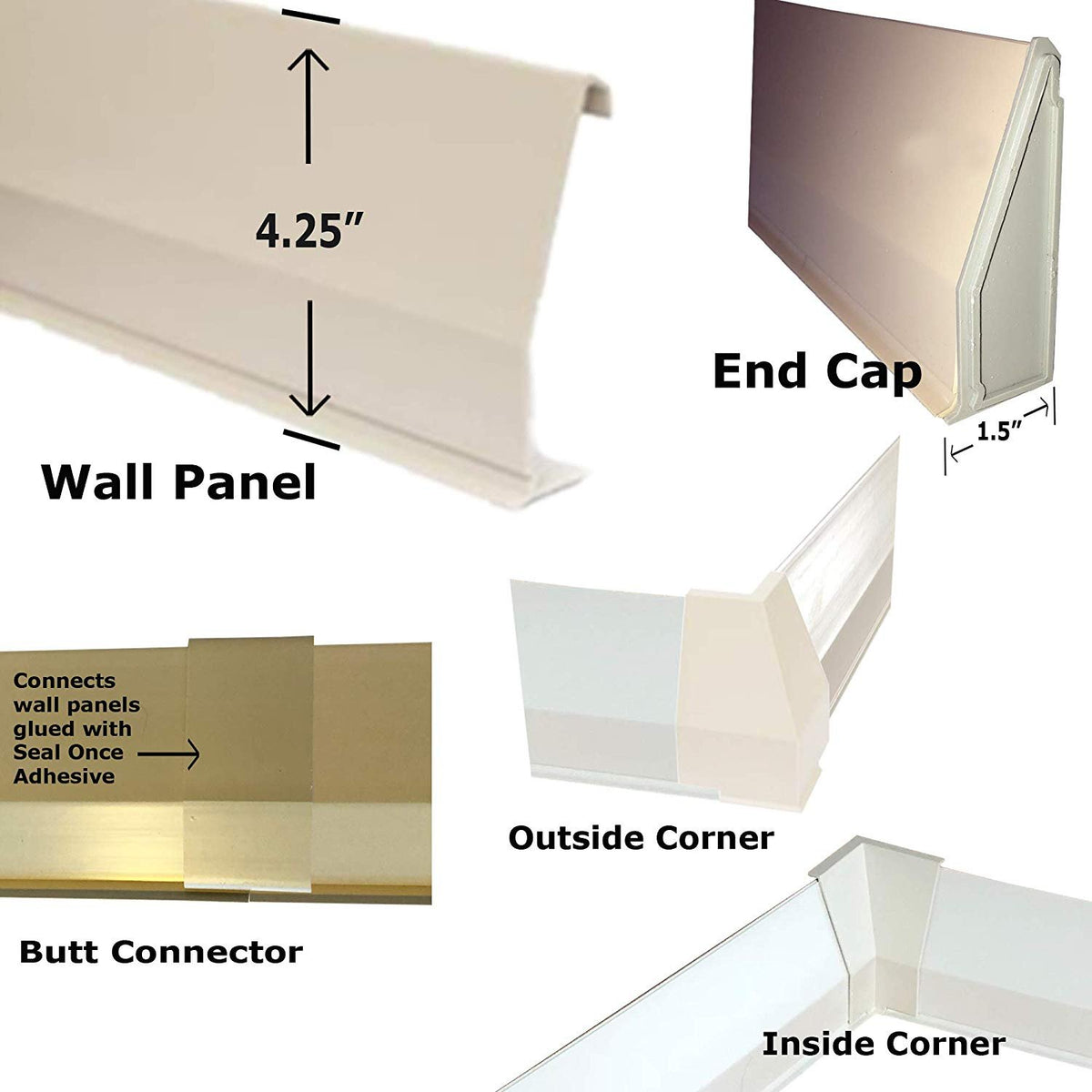
- Baseboard waterproofing system how to#
- Baseboard waterproofing system install#
- Baseboard waterproofing system pro#
Do You Have a Condensation Problem?Ĭondensation is easy to confuse with runoff or subsurface water. In crawl spaces, condensation encourages wood rot and insect attack, and can buckle and delaminate plywood. It happens when moist, warm air hits cool foundation walls or uninsulated cold-water pipes, dampening carpets, rusting appliances, and turning the basement clammy.

Tom MooreĪlso called sweating, condensation shows up as water droplets, wet spots, or puddles on basement floors and walls. It should sit on a gravel bed and be wrapped with landscape fabric that holds out silt. PVC pipe running from downspouts can disperse the water gathered from the roof.
Baseboard waterproofing system how to#
Learn how to fix a wet basement with our solutions below. The key is to determine which of the three major problems you have: condensation, runoff, or subsurface seepage. You can solve most wet-basement problems yourself for significantly less than you'd pay a professional. But even if you're knee-deep in water, don't call your banker yet.
Baseboard waterproofing system pro#
Hiring a pro can cost anywhere from a few hundred dollars to many thousands. How Much Does It Cost to Waterproof Your Basement? Once the water accumulates around your foundation, it works its way inside through cracks, joints, and porous material. In tougher cases, the problem is rising groundwater, which may even be fed by an underground spring. For example, a house with a 1,500-square-foot roof sheds 1,000 gallons of water for every inch of falling rain. The water in the basement most often comes from rainfall and melting snow. homes have wet basements, and 38 percent run the risk of basement mold.

The American Society of Home Inspectors, based in Des Plaines, IL, estimates 60 percent of U.S. If you have a soggy basement, you're not alone. Even if you have a crawl space or just use your basement for storage, a simple case of condensation can buckle hardwood flooring on the level above and spawn harmful mold. If your basement includes finished living space, any kind of moisture can ruin carpeting, drywall, and framing. We’re thinking of placing a rain barrel in vicinty of the problem corner described above.A wet basement is more than a nuisance. Not sure what to make of that, but 🤷🏻♂️ĮDIT: grading around house needs to be improved and better downspouts are needed as well. Oh, and I’ve never witnessed the pump turn on and the basin has always been bone dry. The goal is to at least lay down carpet, but I don’t think it would be worth putting up drywall in case of issues in the future. As of right now, we have had a ton of rain over night and I can see some wet spots on the block, but no water on the floor, so it’s an improvement. The same installer is coming back this weekend to scrape the block walls, apply epoxy in any holes, mold killer, and some sort of think flexible paint to seal in the water to the block. We had some standing water in one corner recently after some heavy rain, that has since been remedied, but the problem was that the water was coming in through the block and settling on the floor over improperly installed “baseboard” (which is just flexible plastic from what I can tell). The drain has helped some, but hasn’t been as effective as I’d like. We didn’t get a lot of water coming in, but there have been wet stops on the block, mold, and some seepage onto the floor.

Baseboard waterproofing system install#
Just bought a 100 year old house here and as part of negotiation we had someone install an interior french drain with a sump pump.


 0 kommentar(er)
0 kommentar(er)
